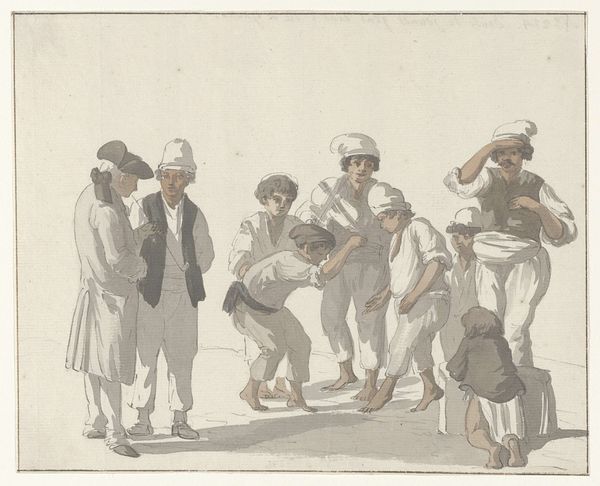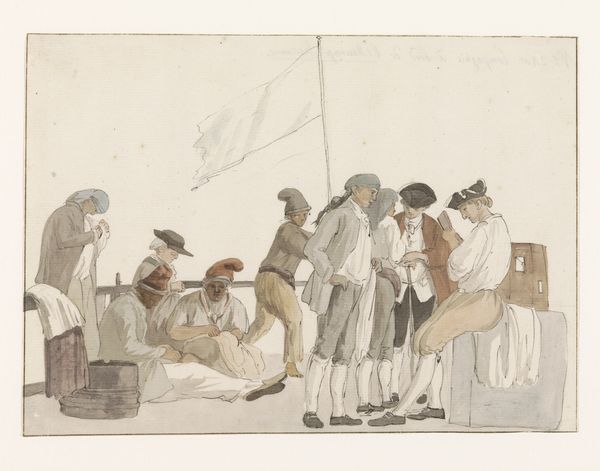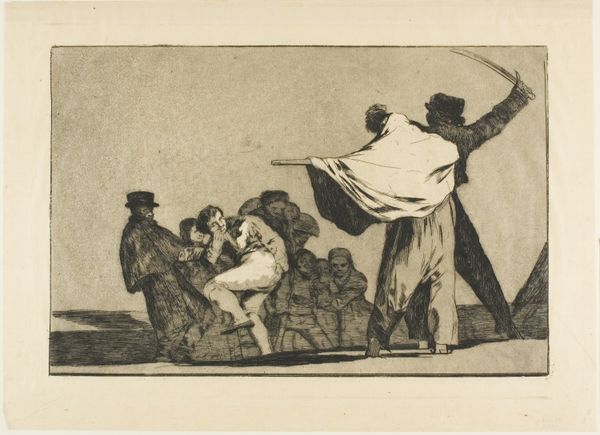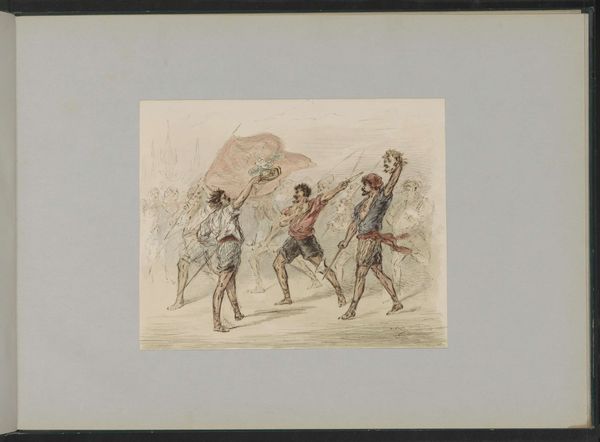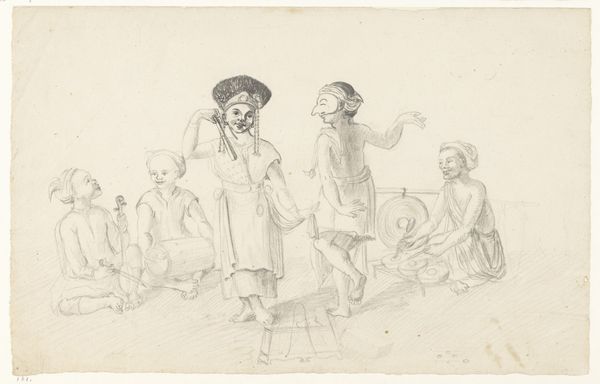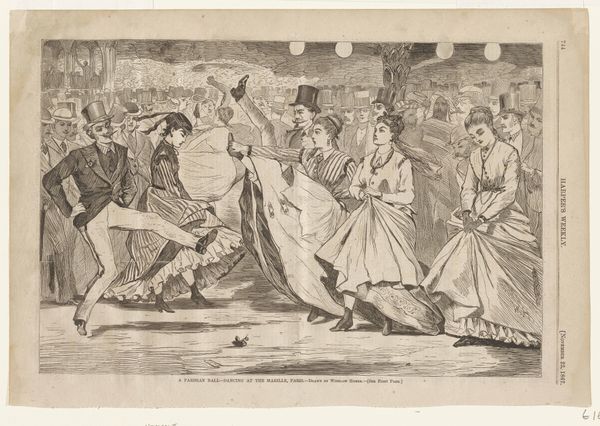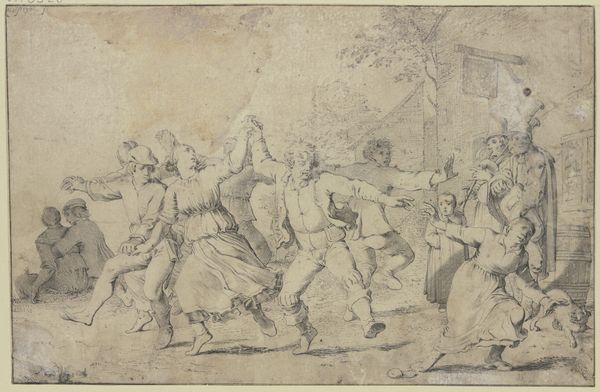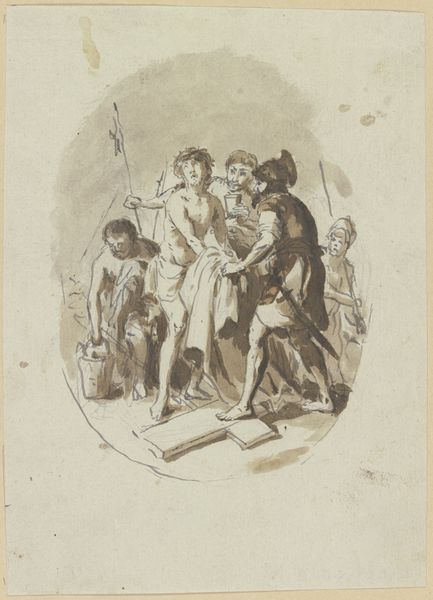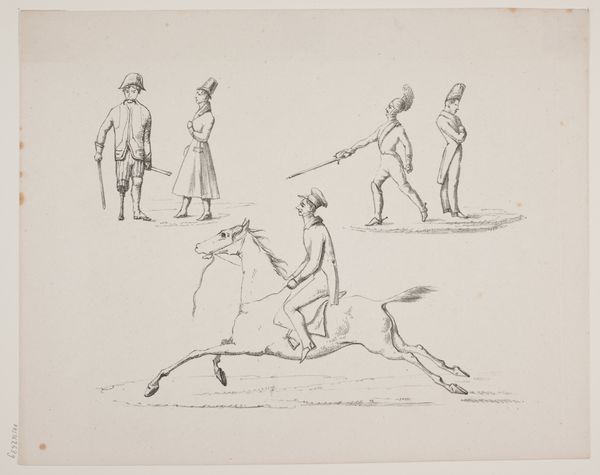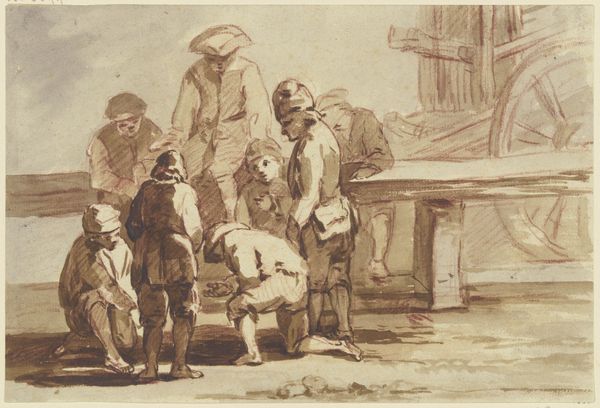
Dimensions: height 187 mm, width 233 mm
Copyright: Rijks Museum: Open Domain
Curator: What a buoyant scene. "Dancing Maltese Sailors" is a pen and watercolour drawing created around 1778 by Louis Ducros, part of the Rijksmuseum collection. Editor: It immediately strikes me as performative, the figures so consciously presented. But the pale washes of colour create an airy feeling, almost like a fleeting memory of a lively event. Curator: Let's think about Ducros’s process here. Pen and watercolour lends itself to quick, observational sketches. He captures movement with minimal strokes and careful attention to the light reflecting on the loose fabric of their clothing. It speaks to the importance of the hand of the artist, making the materiality shine! Editor: Absolutely. The dance itself seems symbolic, perhaps a celebration of a successful voyage, or even a ritual. I wonder, what specific cultural meanings are embedded in their gestures and clothing, particularly those distinct hats they wear? There's almost a theatrical quality to it, reminiscent of Commedia dell'arte. Curator: Indeed. Consider the conditions under which art of this kind was created: patronage, social hierarchies. These men, most likely, are not celebrating freely; there is some pressure, likely economic, that dictates what is captured here, on this piece of paper. What price will be paid, both by the patron and the model? Editor: Interesting, very astute point. Thinking about symbols, I am struck by how the central figure smoking a pipe feels almost like an observer *within* the observation, his posture suggesting contemplation. His presence complicates the otherwise energetic reading of the scene, lending it a melancholic undertone. What meanings do you gather here, considering Ducros’ social position as an artist working within particular political conditions? Curator: For me, it evokes reflections on what remains unseen. The dance is a show, certainly. Yet it also reminds us of all of the physical and material transactions required for us to gaze upon them. Ducros wants us to gaze upon their spectacle, yes. However, who profits in this cultural exchange, is perhaps a more crucial query, especially considering the historical period during which it was created. Editor: A dance of image, a dance of money, a dance of life indeed. It has been insightful viewing the many layers embedded within Ducros’ watercolour through the lenses of making and symbolism!
Comments
No comments
Be the first to comment and join the conversation on the ultimate creative platform.
